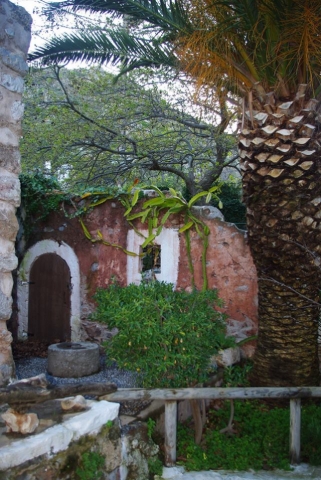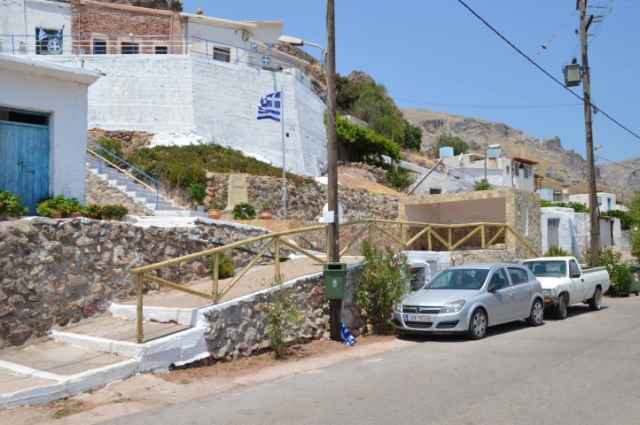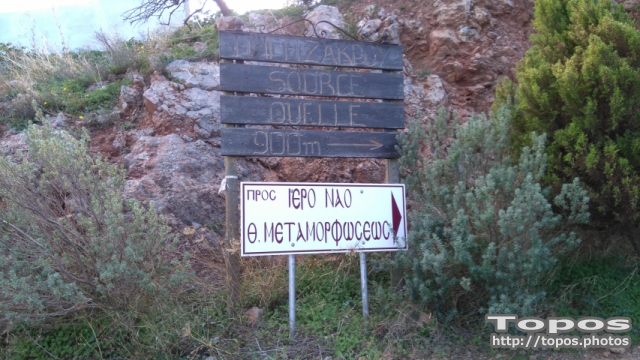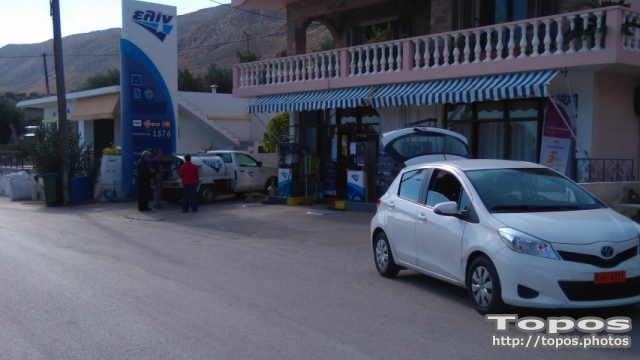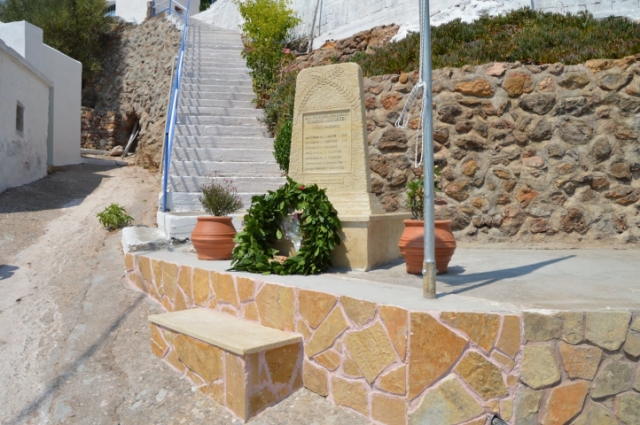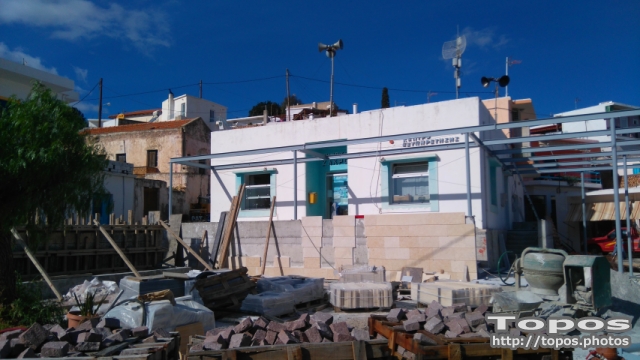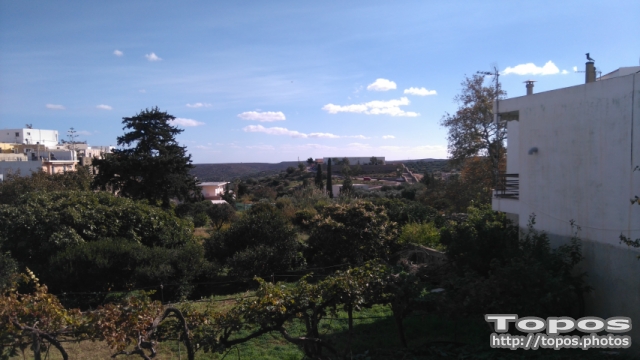Press here.
Prefecture: Lassithi

Places near Epano Zakros Gorge II
The Epano Zakros spring has been formed due to the contact between two water permeable Tripolitsa limestone formations, which are thrust on the non permeable metamorphic rocks of the Phyllite-Quartzite unit. The water moves through the caves of Zakro’s mountains until it reaches its exit at the spring. The water from the spring irrigates the entire surrounding region, while it preserved important ecosystems that even reach Kato Zakros. In the past, it supported several watermills, some of which are preserved to this day.
Water Museum and Old Watermills in Zakros Village, 19km far from Palekastro and 36 from Sitia
. Walking from the village square towards the sources of Mesa Mylou, through the narrow streets of the village, you come across three renovated traditional watermills and the Water Museum.
Until the 70s, those watermills were working with the waterfall and were used by the locals for grinding, making olive oil or for washing their clothes.
The museum is inside the renovated watermill of “Rodanovagellis”. There you can see old equipment and tools that the locals used in their everyday life, their household and their outdoor activities. Furthermore, in the museum there are much traditional furniture, Cretan woven, photographs and everything else that is related to our local tradition and culture.
The renovation of the watermills and the museum started in 1999 with the support of Sitia Growth Organization, the Itanos Municipality and of course the residents of Zakros who donated many old exhibit for the museum.
The renovated buildings are:
• The old cheese- dairy
• Brillakis Watermill
• Rodanakis building
• The Watermill – Factory of Rodanakis
• The Watermill – Bakery of Xapapa
It includes natural sculptures chiseled by the weather and erosion in the Tripolitsa limestone rock formations, and which can be found on the footpath leading from Epano Zakros to Skalia. These processes create strange rock forms that look like statues, and with a little imagination one can make out familiar silhouettes from the animal kingdom!
http://www.sitia-geopark.gr/
The first gorge of Epano Zakros starts from the dirt road exactly above the spring of Epano Zakros. The gorge is very impressive, especially after the dirt road where unique landforms have developed in its walls.
This village belongs to the Itanos Municipality. The origin of the name is unknown, perhaps it is derived from a family name. It is not mentioned in the 1583 census, but it is believed to have been razed with other villages during Turkish pirate raids in 1471 AD and later reestablished after the 16th century.
Το the west of the settlement is the hill of Endichtis (560m) which was believed to have been the site of a peak sanctuary. Excavations in 1972 however proved that this could not have been so. Various things such as loom weights, a whetstone and clay spindle whorls were collected, but not one single figurine, which seems to exclude the possibility of this spot having been a shrine. So it must be regarded rather as a simple habitation.
Adravasti is 36 km from Sitia, 2 km from Zakros and 16 from Palekastro.From the book "Sitia", N. Papadakis, Archaeologist, 1983
Zakros’ Natural History Museum
The Zakros’ Natural History Museum is located at the Polykentro building, lying along the main road that crosses Epanos Zakros village.
The Museum is dedicated to the natural environment of the Park. The flora, fauna, and geology of the area is presented through small dioramas (reconstructions of ecosystems), staffed animals, posters and displays of rocks and fossils. Visitors can find all printed material of the Park, can watch the Sitia Nature park video, can browse the parks’ website and visit the European and Global UNESCO’s geoparks.
The museum offers parking and toilets and is open during summer times. During winter visitors should contact park’s authorities or Sitia Municipality.





